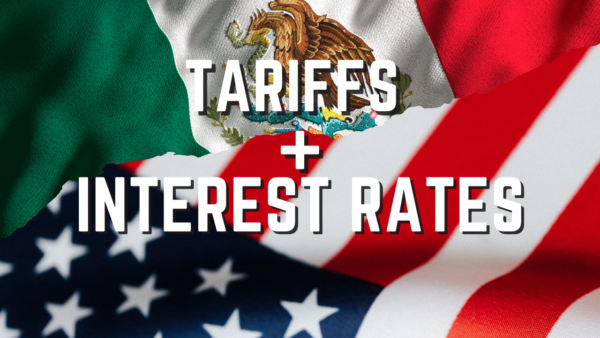One of the legacies of COVID-19 has been substantial disruptions to international trade patterns. This continued to play out in 2022 and complicates the outlook for 2023. For many years, U.S. trade with China grew significantly faster than the rest of the world. This is no longer the case, and for various reasons, trade with China will probably continue to lag.
The table below shows the trade growth rate (the sum of exports and imports) with key trading partners. For 2022, trade data are available only for the first ten months. Accordingly, the table gives the trade growth rate during those months compared to the first ten months of 2021. The data are from the October international trade report published by the Commerce Department’s Bureau of Economic Analysis.
| Growth in U.S trade (first 10 months of 2022 over same period in 2021) | |
| China | 10.9% |
| Mexico | 20.3% |
| Canada | 23.2% |
| European Union | 19.1% |
| Japan | 42.7% |
| World Total | 18.9% |
The data in the table show growth in U.S. trade with China lagging substantially behind trade with other key trading partners and the world. There is a multitude of reasons for this. The shutdowns associated with China’s zero-COVID policy have severely disrupted supply chains in recent years. Ironically, its recent abandonment of this policy has led to a new set of disruptions associated with skyrocketing infection rates and spontaneous precautionary behavior adopted by the Chinese people. With these disruptions will come some familiar problems: delays in shipments, shortages, and a new round of inflation for certain products.
Many businesses that rely heavily on production facilities in China have realized that some suppliers’ diversification is desirable. This is a knock-on effect of the disruptions from COVID that is also working to slow down the growth of trade with China relative to the rest of the world.
Geopolitical considerations are also affecting trade in various ways. The Biden administration has kept most of the tariffs imposed on China imposed by the Trump administration, even while resolving trade disputes with other countries. It has added a new set of trade restrictions on certain high-technology products judged important to national security.
It is also possible that Russia’s invasion of Ukraine has affected global trading relationships beyond those of countries directly affected. While China has been careful not to sell military equipment or provide other overt forms of assistance to Russia, the war has resulted in extensive rethinking about political and economic relationships in many capital cities, including Washington and Beijing. The sanctions against Russia have undoubtedly caused many companies to reconsider the risks involved in investing and trading with potential belligerents in future conflicts.
In light of these considerations, it is not surprising that U.S. trade with China is now growing significantly more slowly than other key trading partners. It is also worth noting that even before COVID, the Chinese economy was no longer experiencing the type of 10% GDP growth that was once fairly common. Indeed, the last time China’s GDP grew by more than 10% was in 2010. In the nine subsequent years, it averaged growth of 4.4%. This shows that even before COVID, China’s underlying potential growth rate was no more than 5%. The reorientation of trade patterns implies that China’s reliance on export-led growth is a thing of the past.
This change in trade patterns also poses challenges for the U.S. economy. In recent decades the opening up of trade with China worked to suppress prices for a wide range of products. The supply chain disruptions associated with COVID provided much of the impetus for the acceleration in inflation seen in 2021 and 2022. These disruptions have been overcome to some extent, and some of these inflationary pressures are abating. But a complete return to the status quo ante also seems unlikely.
_________________________
To become a subscriber, visit www.thecannatareport.com/register or contact cjcannata@cannatareport.com directly. Bulk subscription rates are also available upon request and included in our media kit.




